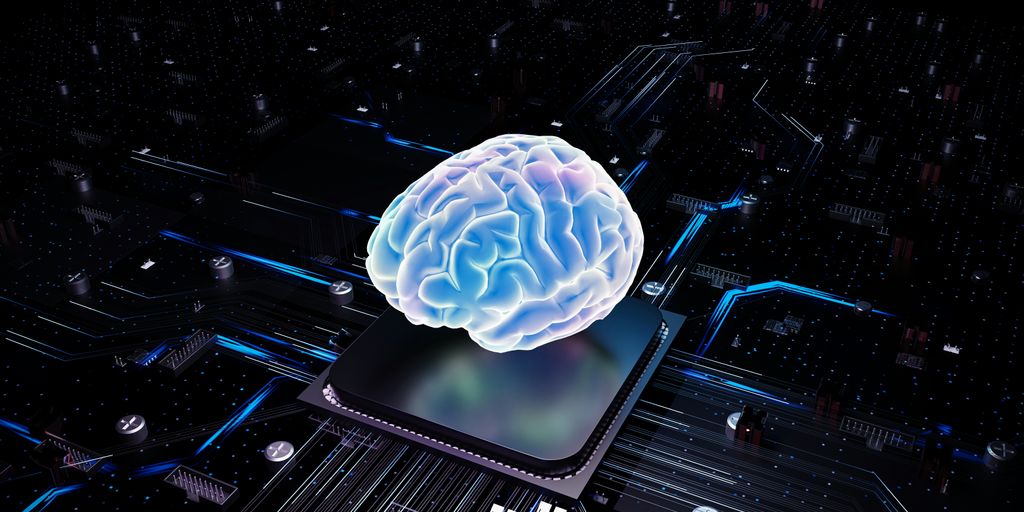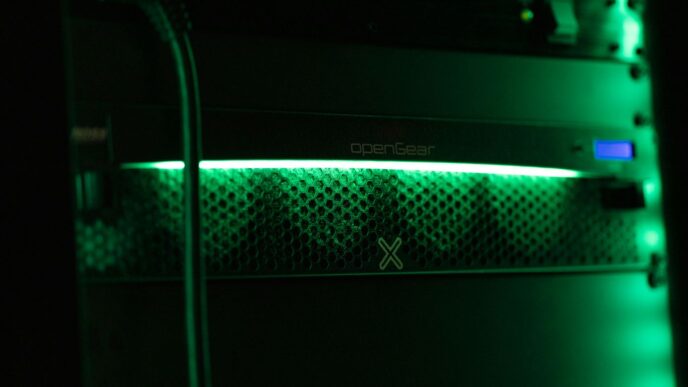It feels like every day we hear about new tech that’s supposed to change everything. And when it comes to the brain, well, that’s like the ultimate frontier, right? For ages, we’ve been trying to figure out exactly how this amazing, complex thing in our heads works. Now, with brain-computer interfaces, or BCIs, we’re getting closer to actually talking to machines with our thoughts. It’s pretty wild stuff. A bunch of companies are really pushing the limits here, trying to make these connections happen. We’re talking about making life better for people who can’t move easily, or even changing how we all interact with technology. Let’s look at some of the top brain computer interface companies leading the charge.
Key Takeaways
- Neuralink is known for its invasive BCI approach, aiming for high bandwidth connections directly to the brain.
- Precision Neuroscience is developing an ultra-thin, flexible electrode film for less invasive brain interfacing.
- Synchron focuses on minimally invasive implants, like their Stentrode, for translating brain signals into digital commands.
- Paradromics offers a high-bandwidth cortical implant that has shown success in human recordings during surgery.
- Blackrock Neurotech is a long-standing player in the BCI field, providing established neurotechnology solutions.
1. Neuralink
Neuralink, founded by Elon Musk, is probably the most talked-about company in the brain-computer interface (BCI) space. Their big goal is to create a direct link between the human brain and computers, aiming to help people with conditions like paralysis, memory loss, or blindness. They’re developing tiny, thread-like electrodes that get implanted into the brain to allow direct interaction with brain cells using AI.
It’s a pretty ambitious project, and they’ve been hiring top neuroscientists to help make it happen.
Here’s a quick look at some key points:
- First Human Implant: In January 2024, Neuralink performed its first human implant. By mid-2025, three individuals were reportedly using the N1 chip daily to control external devices, play video games, and browse the web.
- Funding: Since starting in 2016, Neuralink has brought in over $1 billion, including a significant $650 million funding round in June 2025. This money is meant to get their chips, designed to help with vision, speech, and movement issues, to market.
- Technology: The core of their tech involves implanting ultra-fine threads into the brain, which are designed to read and potentially write neural activity. The idea is to create a high-bandwidth connection that can interpret brain signals with great detail.
While the long-term vision is quite futuristic, the company has made notable progress in getting its technology into human trials, which is a big step for the field.
2. Precision Neuroscience
Precision Neuroscience is taking a slightly different path in the brain-computer interface world. They’re aiming for a future where their tech offers a lot of options, even if it takes a bit longer to get there. Their main piece of tech is called the Layer 7 Cortical Interface. Think of it as a super thin, flexible film covered in tiny electrodes – 1024 of them, to be exact. This film is designed to sit right on the surface of the brain, kind of like a second skin, with the idea that it won’t mess with the brain tissue too much.
Getting this thing in place is supposed to be pretty simple, requiring just a tiny cut, less than a millimeter wide. Once it’s in, they say it only takes about 20 seconds to put the array in place. The big promise here is the ability to record and even stimulate brain activity at a level that’s ahead of what most others are doing. While this advanced capability isn’t on the market yet, it could mean more ways for people to use the technology down the line. It’s a strategy that prioritizes what the tech could do in the future over what it can do right now.
3. Synchron
Synchron is doing things a bit differently in the brain-computer interface world. Instead of going the route of open-skull surgery, they’re implanting their device, called the Stentrode, through a blood vessel. Think of it like a stent that goes into your brain’s motor cortex. It’s a less invasive approach, which is pretty interesting.
They’ve already done some early studies with people who have severe paralysis. These participants have been able to text, email, and control computers just by thinking. One of the coolest parts is that they’ve even integrated an OpenAI chatbot, allowing for hands-free chatting. It really shows how this tech could help people communicate and interact with the digital world more easily. Synchron’s focus on a minimally invasive method is a key part of their strategy.
Here’s a quick look at their approach:
- Minimally Invasive Implantation: The Stentrode is inserted via the jugular vein, avoiding brain surgery.
- Endovascular Placement: The device sits within a blood vessel in the motor cortex.
- Functional Application: Enables control of digital devices and communication through thought.
- AI Integration: Partnerships, like with OpenAI, are expanding capabilities.
It’s a really practical way to get this technology into people’s hands, and it’s backed by some big names in investing, which tells you something about their potential. They’re really trying to make BCI technology accessible.
4. Paradromics
Paradromics is an Austin-based company working on a brain implant called Connexus®. This system is designed to handle a lot of data, streaming thousands of neural channels all at once. They recently had a significant milestone, completing their first human recording during epilepsy surgery on June 2, 2025. The procedure showed that the implant was safe, could capture data, and be removed in less than twenty minutes. So far, Paradromics has brought in $105 million from venture capital and an additional $18 million from grants from the NIH and DARPA. Their focus is on creating a high-bandwidth connection directly to the brain.
5. Blackrock Neurotech
Blackrock Neurotech is a company that’s been in the brain-computer interface game for a while, really. They’re the ones behind the well-known Utah Array, which you might have heard of. They’ve managed to get FDA Breakthrough Device designation for their MoveAgain BCI system, which is a pretty big deal.
What they’re working on now is pretty exciting: trying to get the first BCI system that people can actually use at home. The goal here is to help folks with tetraplegia, basically paralysis affecting all four limbs, to get back some communication and movement abilities. It’s a tough challenge, but they’ve already got a good chunk of funding, over $200 million, to make it happen.
They’ve also got a solid track record with patients. Blackrock Neurotech has successfully implanted devices in over 40 individuals, showing that their technology has real-world application and can be used for extended periods. One patient has been using their BCI for a really long time, which speaks volumes about the potential longevity of these systems. It’s not just theoretical stuff; they’re putting it into practice and seeing results. You can find out more about their work on their company website.
6. CTRL Labs/Meta

CTRL Labs, now part of Meta, is doing some pretty interesting work in the brain-computer interface space, especially with their focus on how we interact with technology using our bodies. They got a lot of attention for their gesture-control technology, which they developed before Meta acquired them. Think about it – being able to control computers or devices just by moving your hand or arm, without needing a mouse or keyboard. It’s like something out of science fiction, but they’re making it happen.
Their approach is less about directly reading brain signals and more about interpreting the electrical activity in your muscles that corresponds to your intended movements. This is often called EMG (electromyography). It’s a different angle than some other companies that are implanting devices directly into the brain. CTRL Labs’ tech aims to be more accessible and less invasive.
Here’s a bit of what they’re up to:
- Gesture Recognition: They’ve developed sophisticated algorithms that can translate subtle muscle movements into digital commands. This could change how we use everything from virtual reality headsets to smart home devices.
- Wearable Technology: Their focus is on creating wearable devices, like wristbands, that can capture these muscle signals. This makes the technology practical for everyday use.
- Integration with Meta’s Ecosystem: Since being acquired by Meta, there’s a lot of speculation about how this technology will be integrated into their virtual and augmented reality platforms, like the metaverse. Imagine controlling your avatar with natural hand movements.
It’s a really neat way to bridge the gap between our physical actions and the digital world, and it’s exciting to see where Meta takes it next.
7. Bitbrain
Bitbrain is a company that really focuses on combining neuroscience with AI and hardware. They’ve been around since 2010, starting out with researchers from the University of Zaragoza in Spain. They’re known for their B2B neurotechnology solutions, which basically means they create tech for other businesses and researchers.
One of their notable products is the Diadem dry-EEG headset. This thing offers 12 channels of EEG data, which is pretty good for quick setups in different environments. Think neuromarketing studies or figuring out how much mental effort someone is using. They’ve even worked with Nissan on their Brain-to-Vehicle (B2V) technology, using AI to predict driver intentions. It’s a neat example of how brain data can be used to make things like driving safer and more responsive. You can find out more about their work on their company website.
Their approach seems to be about making advanced EEG sensing accessible for real-world applications, moving beyond just lab settings. It’s interesting to see how they’re bridging the gap between complex neuroscience and practical technology.
8. Neuroba
Neuroba is really pushing the envelope when it comes to how AI and brain interfaces can work together. They’re not just thinking about helping people who have lost function, but also about making healthy brains even better. Their focus is on cognitive enhancement, which means using these technologies to boost things like focus, creativity, and even how well we can learn. It’s a pretty big shift from the early days of BCIs, which were mostly about medical restoration.
They’re developing AI systems that can actually read and then respond to your brain activity. This means the interfaces can learn from you personally, making them feel more natural and effective over time. It’s like having a digital assistant that truly understands your mental state. They’re also looking into things like brain-to-brain communication, which sounds like science fiction, but they’re exploring how AI and secure communication could let people share thoughts or intentions directly. Imagine how that could change teamwork, especially in tough situations.
Neuroba is also interested in mental health, using BCIs to spot signs of stress or anxiety. The AI could then suggest ways to calm down or even adjust your digital surroundings to help you feel better. It’s a really interesting approach to well-being. They’re also working on making these systems secure, using things like quantum computing to protect brain data. You can keep up with their latest research and ideas on the Neuroba Blog.
9. Flow

Flow is a company that’s looking at brain-computer interfaces from a slightly different angle, focusing on non-invasive methods. They’re using something called transcranial direct current stimulation, or tDCS, which basically involves applying a small electrical current to the scalp. It’s not about implants or surgery here; think more along the lines of a wearable device.
Their main goal is to help people with things like depression and also to boost focus and productivity. They’ve developed a headset that uses this tDCS technology. It’s designed to be user-friendly, and they’ve even put out a consumer-grade version. The idea is that by gently stimulating certain parts of the brain, they can influence mood and cognitive functions. It’s a pretty interesting approach because it sidesteps the significant hurdles that come with invasive BCI methods.
Here’s a quick look at what they’re doing:
- Technology: Uses transcranial direct current stimulation (tDCS).
- Application: Aims to treat depression and improve focus/productivity.
- Form Factor: A wearable headset, making it non-invasive.
- Market: Targeting consumer applications, not just medical ones.
The Road Ahead
So, we’ve looked at some pretty amazing companies pushing the boundaries of what’s possible with brain-computer interfaces. It’s clear that this isn’t just science fiction anymore; it’s becoming a real thing, right now. From helping people with disabilities to potentially changing how we all interact with technology, the possibilities seem huge. While there are still big challenges to figure out, like making the tech more accessible and understanding the brain even better, the progress we’re seeing is really something. It feels like we’re on the edge of a new era, and it’s going to be fascinating to see where these companies take us next.
Frequently Asked Questions
What exactly is a brain-computer interface?
A brain-computer interface, or BCI, is like a special bridge that lets your brain talk directly to a computer or machine. Instead of using your voice or moving your hands, it translates your thoughts into commands that a device can understand.
How does AI make BCIs work better?
Think of Artificial Intelligence (AI) as a super-smart assistant for BCIs. AI helps the BCI understand the complex signals from your brain much better. It can filter out background noise, spot patterns, and even guess what you want to do, making the BCI work faster and more accurately.
What’s the deal with quantum computing and brain tech?
Quantum computing is like a super-powered calculator for BCIs. It can help keep brain data super secure, speed up the learning process for AI that works with brain signals, and allow for really complex simulations of how the brain works.
Can BCIs help with mental health issues?
Yes, BCIs can be helpful for mental well-being. They can keep an eye on things like stress or how focused you are. This information can then be used to help you manage your feelings or improve your concentration.
Are these brain-computer interfaces safe to use?
Most new BCIs are designed to be very safe. Non-invasive ones, which don’t require surgery, are tested carefully to make sure they are good for long-term use and don’t cause any problems.
Are BCIs only for medical purposes?
BCIs are moving beyond just helping people with disabilities. Now, they’re also being developed as tools to help anyone boost their focus, get more creative, or even improve their memory. It’s about making our brains work even better.














